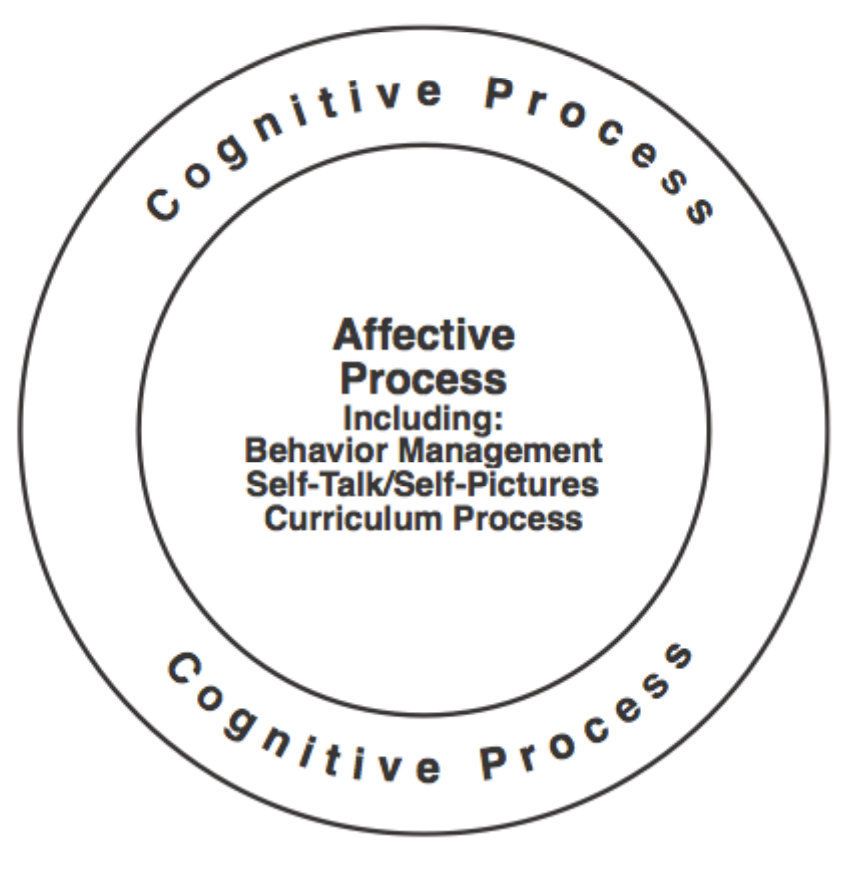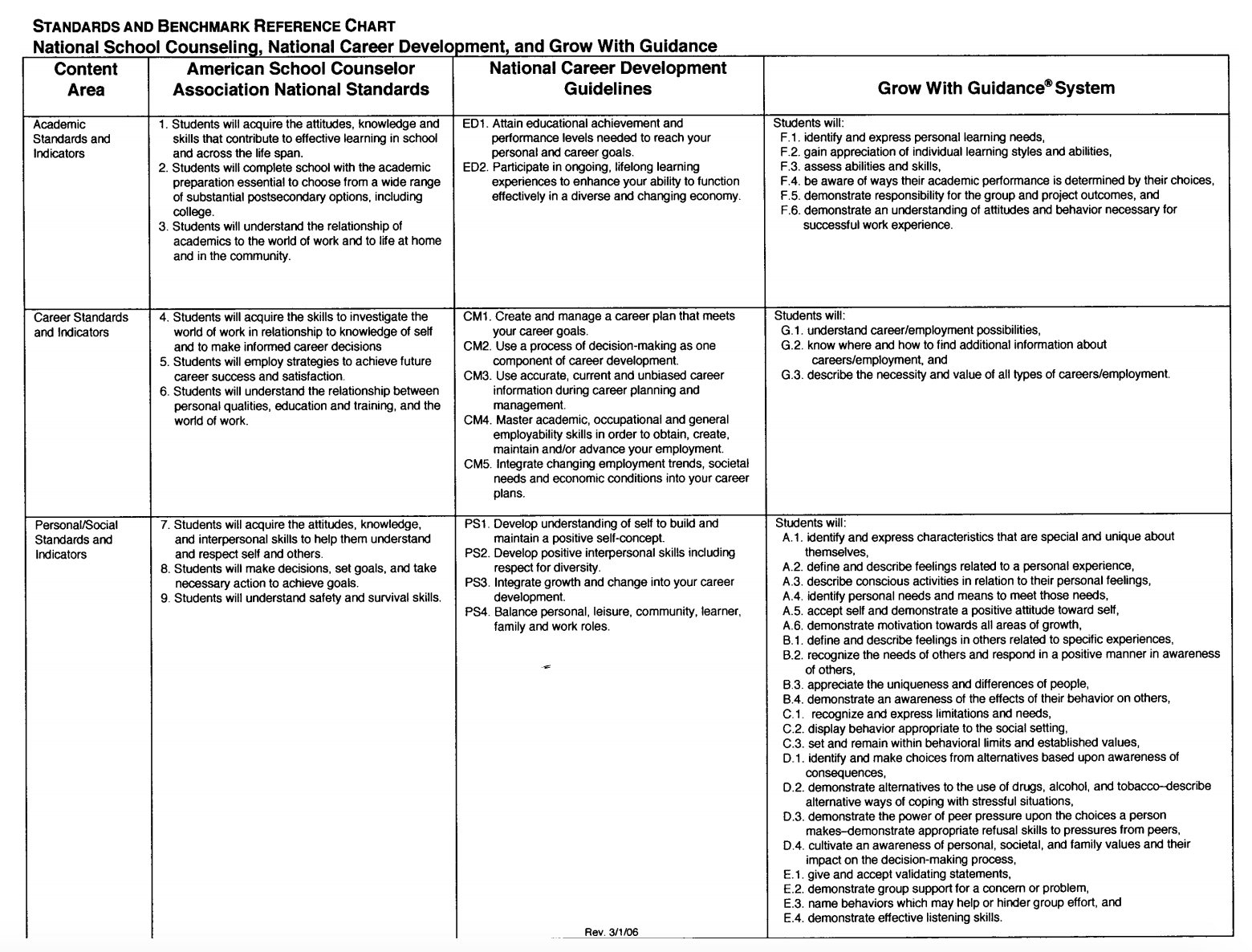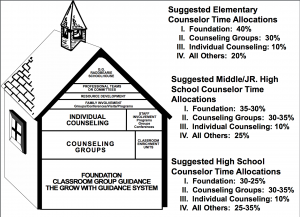School Safety – Using a Comprehensive Formula for Success
Keeping our schools safe is an escalating challenge that requires a comprehensive plan. Learn the school safety formula for solutions to help prevent future school safety challenges. Use the 10 point check list to assess your current level for pro-action and prevention. Prioritize 3 things you can do now or are currently doing and how to develop an expanded approach for your school community.
School Safety Presentation [PDF] 1MB
School Safety – Using a Comprehensive Formula for Success
AOCC 2018 Conference Hyatt Regency Columbus (Downtown) November 9, 2018 Session 1:15 – 2:45
Contact information for additional questions:
Tommie Radd, PhD, LPC, NSCC, NBCC,CRC: Consultant
Phone: 614-607-1373; email: [email protected]; web site: www.allsucceed.com
Personal, social, emotional and behavioral skills are the only constant in every situation. The level of development of those skills determines if one will respond or react over time. – Tommie R. Radd, PhD
School Safety – Using a Comprehensive Formula for Success
Agenda
- Introduction
- School Safety 14 Point Self-Assessment and GWG Checklist
- An Overview of System School Safety Formula
- An Overview of Guidance System Components and Checklist:
- Behavior Management (extrinsic)
- Self-Talk/Self Pictures (intrinsic)
- Curriculum (student skills)
- Implementation (staff skills)
- Family Involvement
- Observation/Evaluation
- An Overview of School Counseling Program Components and Life Lab Information
- Formula Applications and Identify 3 ideas/resources to use as a beginning plan and determine ways of expanding the plan for prevention
- Questions & Closing
Self-Assessment for School Safety – Prevention and Intervention
Check Yourself Out. See how many YES responses you have. The greater number of YES responses, the greater your level of pro-action and prevention.
Check yourself out. The Classroom Group Guidance System Checklist is another way you can assess and evaluate your program for pro-action and prevention.
Both Checklists are found at www.allsucceed.com
Classroom Group Guidance System Checklist
-
- Positive Behavior Plan
- Share Benchmarks, Standards, and Indicators
- Self Concept Series/Weave as it relates to Behavior
- Five Star Class Meetings
- Class Responsibilities and Guidelines
- Problem Solving – “Help” vs “Hurt”
- Effective Behavior Interactions
- Problem Ownership
- Cooperative Strategies
- Contracts
- Peer Group Work
- The Five C’s for Maintaining Conflict
- Performance Observation/Evaluation
- Increase Component Implementation Annually
- Self-Talk/Self-Pictures Plan
- Share Benchmarks, Standards, and Indicators
- Self Concept Series/Weave as it relates to Self-Talk/Self-Pictures
- Activity Process General Self-Talk
- Activity Process Specific Self-Talk
- Activity Process General Self-Pictures
- Activity Process Specific Self-Pictures
- Incorporate Relaxation
- Performance Observation/Evaluation
- Increase Component Implementation Annually
- Curriculum Plan
- Share Benchmarks, Standards, and Indicators
- Self Concept Series/Weave as it relates to Student Skills
- Begin Core Activities
- CANA (Children’s Affect Needs Assessment) Administered
- ITS (Invitational Teaching Survey) Administered
- Florida Key Administered
- CANA Pre Report
- ITS Pre Report
- Florida Key Pre Report
- Selective Activities
- Format Implemented for all Activities
- Performance Observation/Evaluation
- Post CANA, Post ITS, and Post Florida Key Tests Administered
- CANA, ITS, and Florida Key Post Reports
- Report summary written including all year-end performance Observation/Evaluation information
- Increase Component Implementation Annually
- Staff Improvement Skills
- Share Benchmarks, Standards, and Indicators
- Self Concept Series/Weave as it relates to Staff
- Overview of the System
- Overview of Behavior Management Component
- Overview of Self-Talk/Self-Pictures Component
- Overview of Staff Implementation Skills
- Overview of Curriculum Component
- Conduct Staff Needs Assessment
- Prioritize Staff Skills
- Encouragement Strategies
- Prioritize Group Techniques
- Prioritize Other Needs Based on the ITS and Needs Assessment
- Performance Observation/Evaluation
- Increase Component Implementation Annually
- Family Involvement
- Share Benchmarks, Standards, and Indicators
- Self Concept Series/Weave as it relates to Family
- Overview of the System
- Overview of Behavior Management Component
- Overview of Self-Talk/Self-Pictures Component
- Overview of Staff Implementation Skills
- Overview of Student Curriculum Component
- Conduct Family Needs Assessment
- Prioritize Skills from Behavior Management Component
- Prioritize Skills from Self-Talk/Self-Pictures Management Component
- Prioritize Skills from Staff Implementation Skills
- Prioritize Skills from Curricular Core and Other Skills
- Performance Observation/Evaluation
- Increase Component Implementation Annually
- Positive Behavior Plan
It is recommended that all system information be included for families when possible.
- .
- Comprehensive School Counseling Program System – Program Components Are Interrelated and Interactive
- Guidance System is the Foundation of the School Counseling Program
- Crisis Plan
- they feel connected with the schooling process
- they feel comfortable being in a classroom
- student–teacher and student–student relationships are viewed as a major factor in student safety
- students see peers as someone to help and not someone to “beat”
- students have learned the personal, social, emotional, and behavioral skills needed to communicate and belong
- Behavior Management (extrinsic)
- Self-Talk/Self Pictures (intrinsic)
- Curriculum (student skills)
- Implementation (staff skills)
- Family Involvement
- Observation/Evaluation
- Congruent
- Systemic – identify all components of the System or whole and understand the relationship between components
- Slowly and simultaneously
- 3-5 year process
- The Whole is larger than the sum of the parts
-
- Positive Behavior Plan
- Share Benchmarks, Standards, and Indicators
- Self Concept Series/Weave as it relates to Behavior
- Five Star Class Meetings
- Class Responsibilities and Guidelines
- Problem Solving – “Help” vs “Hurt”
- Effective Behavior Interactions
- Problem Ownership
- Cooperative Strategies
- Contracts
- Peer Group Work
- The Five C’s for Maintaining Conflict
- Performance Observation/Evaluation
- Increase Component Implementation Annually
- Self-Talk/Self-Pictures Plan
- Share Benchmarks, Standards, and Indicators
- Self Concept Series/Weave as it relates to Self-Talk/Self-Pictures
- Activity Process General Self-Talk
- Activity Process Specific Self-Talk
- Activity Process General Self-Pictures
- Activity Process Specific Self-Pictures
- Incorporate Relaxation
- Performance Observation/Evaluation
- Increase Component Implementation Annually
- Curriculum Plan
- Share Benchmarks, Standards, and Indicators
- Self Concept Series/Weave as it relates to Student Skills
- Begin Core Activities
- CANA (Children’s Affect Needs Assessment) Administered
- ITS (Invitational Teaching Survey) Administered
- Florida Key Administered
- CANA Pre Report
- ITS Pre Report
- Florida Key Pre Report
- Selective Activities
- Format Implemented for all Activities
- Performance Observation/Evaluation
- Post CANA, Post ITS, and Post Florida Key Tests Administered
- CANA, ITS, and Florida Key Post Reports
- Report summary written including all year-end performance Observation/Evaluation information
- Increase Component Implementation Annually
- Staff Improvement Skills
- Share Benchmarks, Standards, and Indicators
- Self Concept Series/Weave as it relates to Staff
- Overview of the System
- Overview of Behavior Management Component
- Overview of Self-Talk/Self-Pictures Component
- Overview of Staff Implementation Skills
- Overview of Curriculum Component
- Conduct Staff Needs Assessment
- Prioritize Staff Skills
- Encouragement Strategies
- Prioritize Group Techniques
- Prioritize Other Needs Based on the ITS and Needs Assessment
- Performance Observation/Evaluation
- Increase Component Implementation Annually
- Family Involvement
- Share Benchmarks, Standards, and Indicators
- Self Concept Series/Weave as it relates to Family
- Overview of the System
- Overview of Behavior Management Component
- Overview of Self-Talk/Self-Pictures Component
- Overview of Staff Implementation Skills
- Overview of Student Curriculum Component
- Conduct Family Needs Assessment
- Prioritize Skills from Behavior Management Component
- Prioritize Skills from Self-Talk/Self-Pictures Management Component
- Prioritize Skills from Staff Implementation Skills
- Prioritize Skills from Curricular Core and Other Skills
- Performance Observation/Evaluation
- Increase Component Implementation Annually
- Positive Behavior Plan
- Foundation: 40%
- Counseling Groups: 30%
- Individual Counseling: 10%
- All Others: 20%
- Foundation: 35-30%
- Counseling Groups: 30-35%
- Individual Counseling: 10%
- All Others: 25%
- Foundation: 30-25%
- Counseling Groups: 30-35%
- Individual Counseling: 10%
- All Others: 25-35%
- What Is The Impact on Students of Implementing A Developmental School Counseling System and Program?
- What Are Three Things You Can Do Now To Integrate Ideas Discussed Today?
What Did You Discover From Your Self-Assessments?
Overview of the System School Safety Formula
School Safety
Schools, families, and communities can break the cycle and help students develop their spirit, purpose, and potential when:

An Overview of a Guidance System
System Components Implemented

Classroom Group Guidance System Checklist
It is recommended that all system information be included for families when possible.


Life Lab
A way of defining the classroom as a simulation in which students, pre-K-12 and beyond, learn, experience, and apply the essential skills needed for life; the comprehensive developmental guidance system creates a life lab in every classroom through which students develop a conscious and intentional frame of reference that can be applied throughout life.



Suggested Elementary Counselor Time Allocations
Suggested Middle/JR. High School Counselor Time Allocations
Suggested High School Counselor Time Allocations
APPLICATION QUESTIONS
Additional Resources for Consideration That May Support Your Enrichment Programs for Students, Staff, and Families
International Alliance for Invitational Education (IAIE)
The comprehensive systems formula for school safety prevention is integrated with the concepts of invitational education. The system includes two online surveys. The Invitational Teaching Survey and the Children’s Affect Needs Assessment, both found in the Grow With Guidance System Manual. For more information and materials about IAIE visit their website at http://invitationaleducation.net.
For additional information about the two online surveys visit http://allsucceed.com/instrumentsreports/
References
Radd, T. R. (2014). Teaching and Counseling for Today’s World: Pre-K-12 & Beyond Second Edition. Columbus, Ohio: Grow With Guidance. ISBN: 978-1-878317-58-2
Radd, T. R. (2014). Teaching and Counseling for Today’s World: Pre-K-12 & Beyond Second Edition, e-book. Columbus, Ohio: Grow With Guidance. ISBN: 978-1-878317-61-2
Radd, T. R. (2007). The Grow With Guidance System Manual Third Edition. Omaha, Nebraska: Grow With Guidance. ISBN: 978-1-878317-53-7 (1-878317-53-9).
Radd, T. R. (2014). The Grow With Guidance System Manual Third Edition, e-book. Columbus, Ohio: Grow With Guidance. ISBN: 978-1-878317-59-9
Radd, T. R. (2007). The Grow With Guidance Primary Level Third Edition. Omaha, Nebraska: Grow With Guidance. ISBN: 978-1-878317-54-4 (1-878317-54-7).
Radd, T. R. (2014). The Grow With Guidance Primary Level Third Edition, e-book. Columbus, Ohio: Grow With Guidance. ISBN: 978-1-878317-60-5
Radd, T. R. (2007). The Grow With Guidance Intermediate Level Third Edition. Omaha, Nebraska: Grow With Guidance. ISBN: 978-1-878317-55-1 (1-878317-55-5).
Radd, T. R. (2014). The Grow With Guidance System Intermediate Level Third Edition, e-book. Columbus, Ohio: Grow With Guidance. ISBN: 978-1-878317- 62-8
Radd, T. R. (2007). The Grow With Guidance Middle School Level Third Edition. Omaha, Nebraska: Grow With Guidance. ISBN: 978-1-878317-56-8 (1-878317-56-3).
Radd, T. R. (2014). The Grow With Guidance Middle School Level Third Edition, e-book. Columbus, Ohio: Grow With Guidance. ISBN: 978-1-878317-63-6
Radd, T. R. (2007). The Grow With Guidance High School Level Third Edition. Omaha, Nebraska: Grow With Guidance. ISBN: 978-1-878317-57-5 (1-878317-57-1)
Radd, T. R. (2014). The Grow With Guidance High School Level Third Edition, e-book. Columbus, Ohio: Grow With Guidance. ISBN: 978-1-878317-64-4 References
Radd, T. R. (2006). Classroom Activities for Teachers, Counselors, and Other Helping Professionals Pre-K–12 & Beyond Vol. I. Omaha, Nebraska: Grow With Guidance. ISBN: 1-878317-45-8
Radd, T. R. (2014). Classroom Activities for Teachers, Counselors, and Other Helping Professionals: Pre-K-12 & Beyond Vol I. Second Edition, e-book. Columbus, Ohio: Grow With Guidance. ISBN: 1-878317-65-2
Radd, T. R. (2006). Classroom Activiites for Teachers, Counselors, and Other Helping Professionals Pre-K–12 & Beyond Vol. II Omaha, Nebraska: Grow With Guidance. ISBN: 1-878317-46-6
Radd, T. R. (2014). Classroom Activities for Teachers, Counselors, and Other Helping Professionals: Pre-K-12 & Beyond Vol II Second Edition, e-book. Columbus, Ohio: Grow With Guidance. ISBN: 1-878317-65-
Radd, T. R. (2014). The Grow With Guidance System Music: G. G. Raddbearie Sings, e-book. Columbus, Ohio: Grow With Guidance. ISBN: 978-1-878317-68-7
Radd, T. R. (2007). The Grow With Guidance® System Music: G.G. Raddbearie Sings. Omaha, Nebraska: Grow With Guidance. isbn: 978-1-878317-47-6 (1-878317-47-4).
Radd, T. R. (2014). The Grow With Guidance System Fun Game Second Edition, e-book. Columbus, Ohio: Grow With Guidance. ISBN: 978-1-878317-67-9
Radd, T. R. (2007). The Grow With Guidance® System F.U.N. Game, Second Edition. Omaha, Nebraska: Grow With Guidance. ISBN: 978-1-878317-49-0 (1-878317-49-0)
Radd, T. R. (2006). The History, Development, and Research of the Educational Systems Model: The Grow With Guidance® System. Omaha, Nebraska: Grow With Guidance. isbn: 978-1-878317- 52-0 (1-878317-52-0).
A complete Research Report is available here.